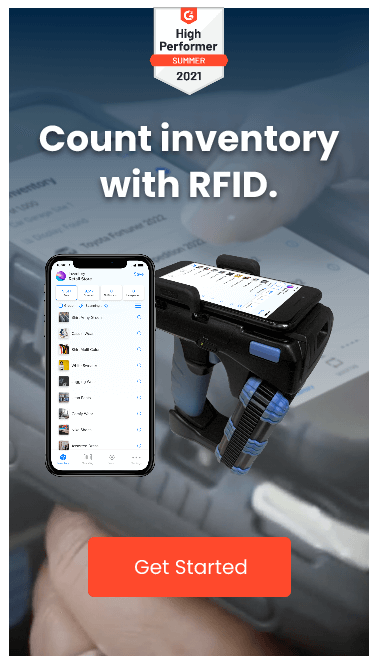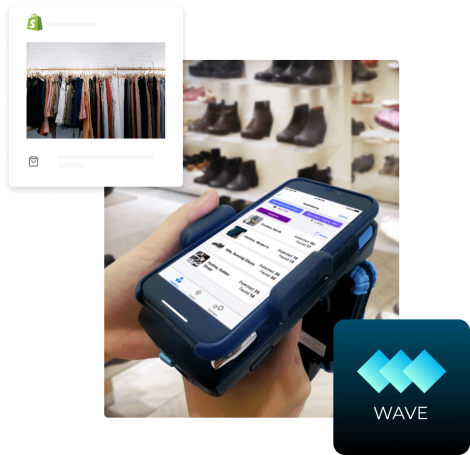Which direction do manufacturers and big businesses in retail should focus on?

While studying other companies' growth strategies cannot provide a foolproof blueprint, it can offer valuable and useable insights; with so many insights and inspirations that businesses can learn from, it gets confusing which one would fit and work for your business.
Even with clear and relevant commonalities, an industry that manufacturers fail to appreciate is the retail industry. Many retail companies rise and fall, and the ones that managed to succeed have similar aspects that cannot be overlooked: an impeccable inventory management system.
Let’s take a look at one retail company that has shown great success even during economically challenging seasons due to a worldwide pandemic.
Walmart and the reconsideration of RFID
Walmart's stock has exhibited a consistent upward trajectory since the onset of the pandemic; even though it experienced a temporary decline in 2022, where it subsequently rebounded. Numerous factors contributed to Walmart's growth amid the pandemic, and maintaining precise inventory levels remains a crucial factor in ensuring retail profitability, regardless of the store's scale.
According to Walmart’s Senior Director of Merchandising — Shelly Mcdougalin in 2022 through LinkedIn:
"We recently launched RFID in Walmart #apparel, this has improved inventory accuracy but more importantly has helped us better serve our #customers! Looking forward to partnering with our suppliers to expand #rfid to additional categories this year."
Walmart used RFID technology to improve inventory accuracy during a labor shortage. Most manufacturers have not considered RFID since 2005, when Walmart and the U.S. Department of Defense mandated its use. At the time, the results from suppliers were varied, and the implementation challenges were typical. In this day and age, the technology has evolved; and the benefits of RFID are now much clearer. Manufacturers who have not yet adopted RFID should reconsider, as it can help them improve inventory accuracy, reduce labor costs, and boost profits.
Other things you need to pay attention to
The RFID industry has matured significantly over the past two decades, just like any other technologies we are using now. With Walmart leading the industry standards in RFID inventory management and control, suppliers and manufacturers alike will have little to no choice but to adhere to said mandate. The industry has become much more sophisticated. Here are a few areas that manufacturers should focus on:
- Cost: Walmart would not be doubling down on RFID if the hardware, software, and related costs were still unpredictable. The industry has responded to criticisms of the technology in the mid-to-late 2000s by making improvements across the board.
- Applications: RFID can be used for a variety of applications, such as inventory tracking, asset management, and supply chain management. Manufacturers need to carefully consider which applications are most relevant to their business needs.
- Technology: There are different types of RFID tags and readers, each with its various advantages and disadvantages. Manufacturers need to choose the right technology for their specific application.
- Implementation: RFID implementation can be complex and time-consuming. Manufacturers need to carefully and strategically plan their implementation process to ensure a smooth rollout.
Kick-start programs and Item Level Tagging
In her LinkedIn post, McDougal acknowledged the successful launch of a clothing line. This is a good idea because the nature of clothing materials aligns well with cost-effective UHF inlays, and the characteristics of clothing items such as brand, size, and price tags make them ideal for consistent readable RFID scans.
When embarking on these kinds of programs, prioritize achieving success as your primary objective, with broader acceptance as a secondary goal. Check out SimplyRFID's AI Kickstart Program, a comprehensive service offered exclusively by SimplyRFiD designed to help retailers optimize their inventory management practices. This campaign will also start creating a working relationship between manufacturers and retailers to achieve the benefits of seamless and efficient source tagging. This program involves a range of essential training, including product source tagging, the implementation of a retail rollout protocol, staff knowledge, and data integration across eCommerce, ERP, and CRM platforms.
To attain the precision necessary for a return on investment (ROI), it is crucial to implement item-level RFID tagging. The key to success is in the details. Tagging each item could be a daunting and cumbersome task; and, it is the secret ingredient to achieve an inventory with high accuracy. The AI Kick start program SimplyRFiD offers would help manufacturers and retailers commence creating source-tagged products that are ready to roll out in retail stores. While it's great to have aspirations, all these resources to optimize your business are available to you. Walmart is significantly investing in RFID technology, and whether you're part of their supply chain or not, it's high time for businesses to revisit RFID as well.


